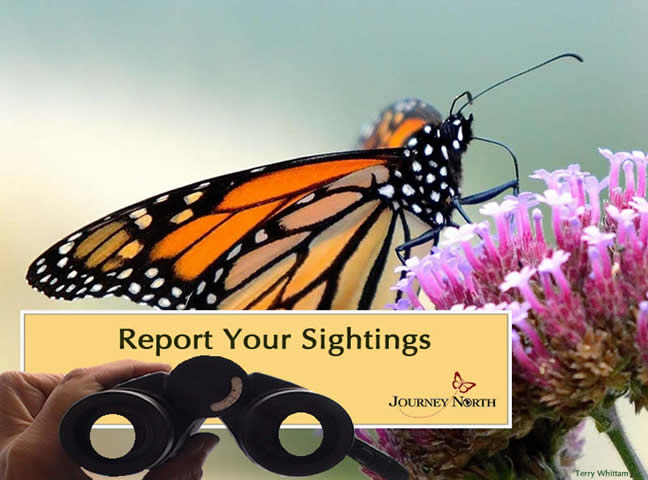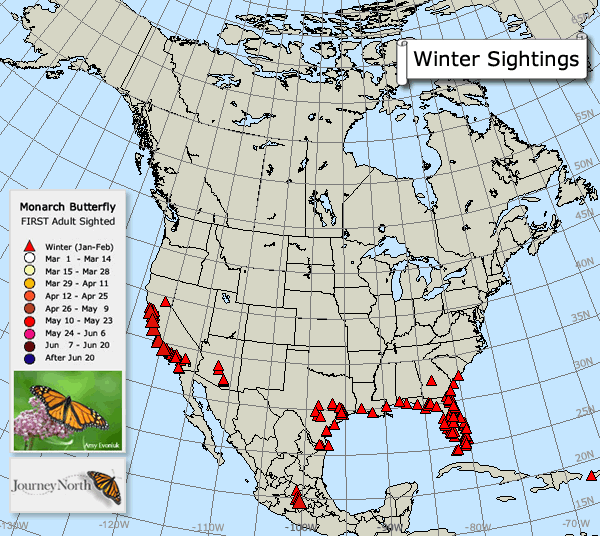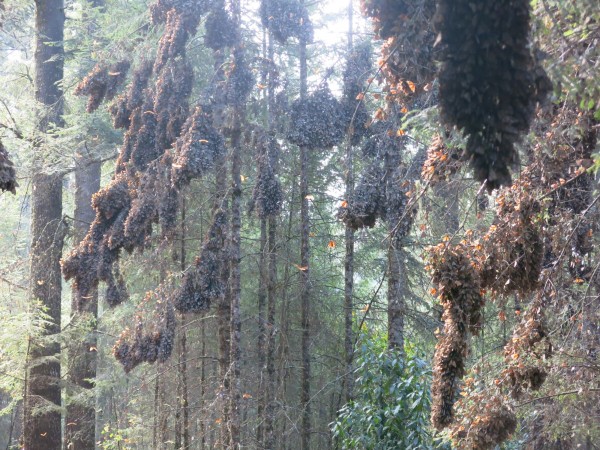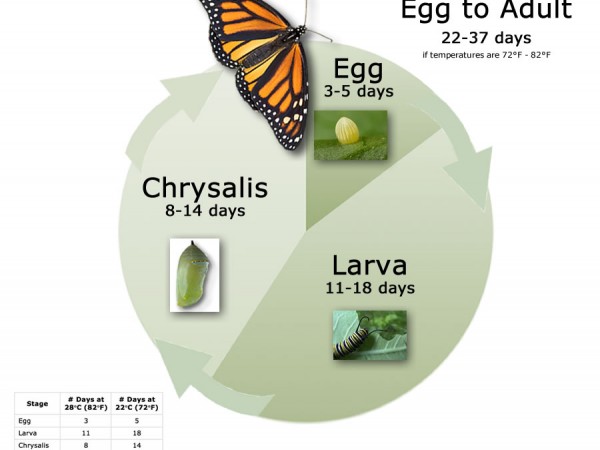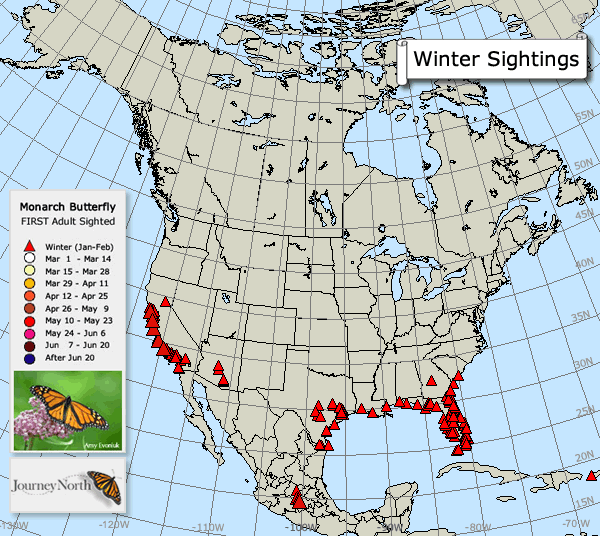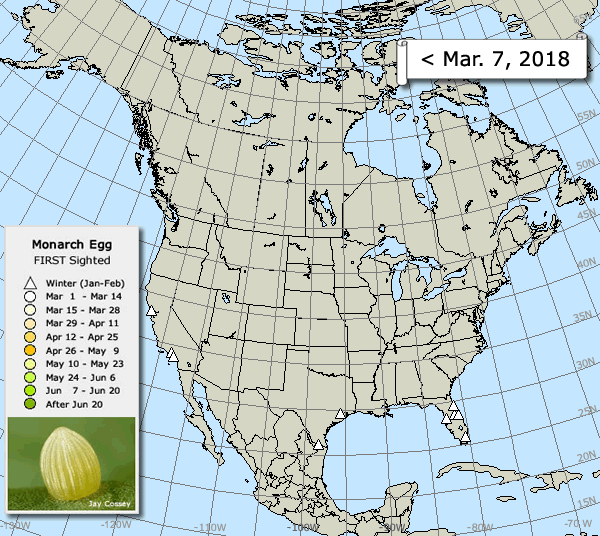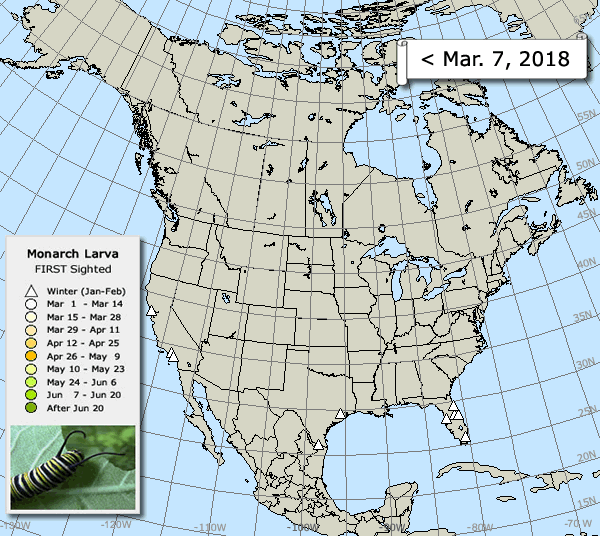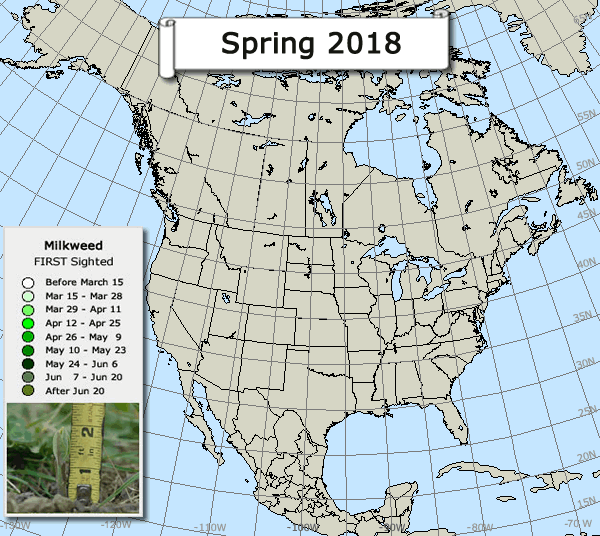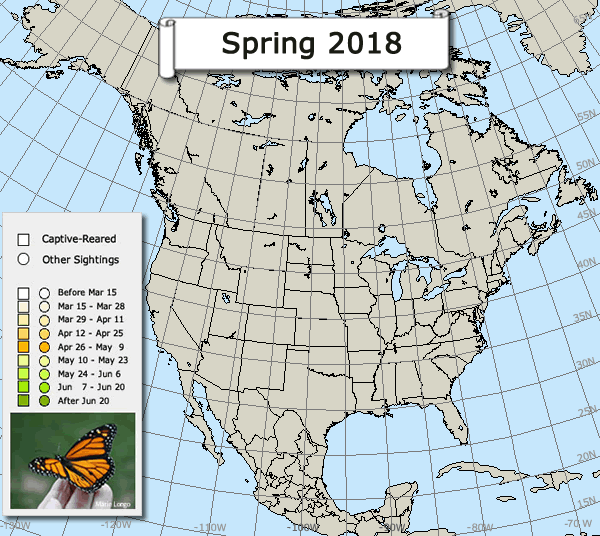Warm, Cold, Stop, Go
Cold temperatures stalled the migration's leading edge this week, concentrating the population in warm southern regions where eggs and larvae can grow quickly.
Winter Returns
Winter returned to the central United States this week and stopped the migration in its tracks. The leading edge did not advance at all; our northernmost monarch remains the sighting in Tulsa, Oklahoma that was reported 12 days ago.
Migration is a stop and go journey, with wind and weather in control. The migration advanced 200 miles last week under south winds and warm temps. Those favorable conditions were replaced this week by north winds and unseasonable cold.
Watch the animation and compare this week to last. You can picture the butterflies stacking up. More cold temperatures are in the forecast. When will the weather blockade break?
- Use the live wind map to predict when and where monarchs will travel.
Surprise at the Sanctuary
A completely unexpected surprise awaited Estela on her weekly visit to El Rosario.
"Where last Wednesday, March 26, I counted around 12 trees very dense with monarchs, today, the population has doubled its density to around 30 trees!" More...
Monarchs and Temperature
Spring Migration 2018
Report all monarchs you see — adults, eggs, larvae.


